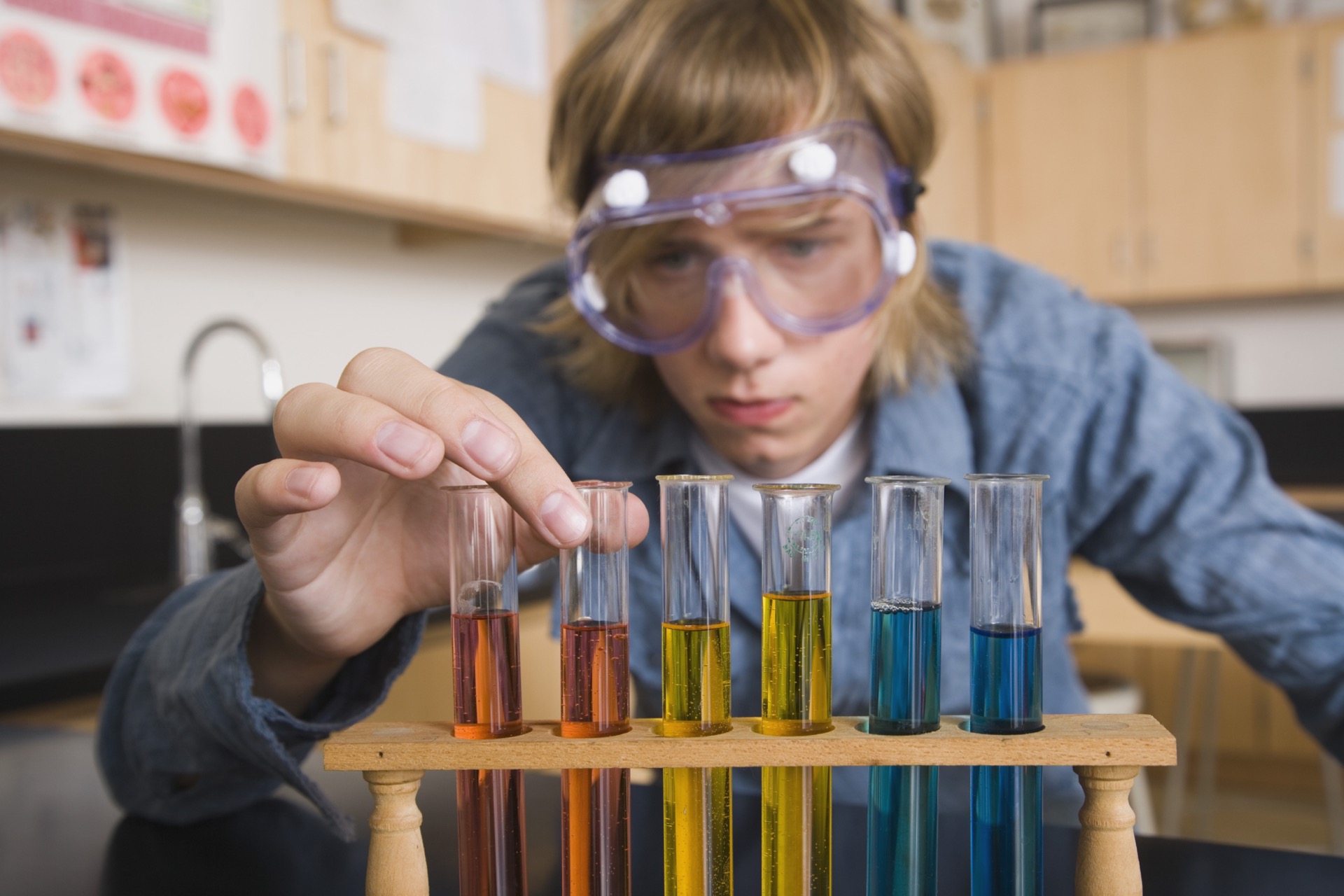
Key elements of the Odyssey program created an effective STEM learning ecosystem to inspire students to engage in STEM exploration and learning; and to discover STEM career options:
Infrastructure improvements to make the public school a center of excellence in key STEM areas
Tactile experiences with advanced concepts matching teacher domain
Engaging all students - in class - and exploring outside the classroom
Exposure to STEM career opportunities in actual work environments
Infrastructure Improvements:
New technology like probeware, smart boards, robotics and activity kits helped improve science literacy, enhance curriculum and demonstrate concepts – creating a more tactile and hands-on learning environment. New lab equipment like CNC machines, 3D printers, electrical equipment, complex structures, rockets, microscopes and dissection supplies provided students with a broader range of lab activities to increase hands-on learning and participation. Robotics technology and engineering kits helped develop STEM skills and multi-sensory learning across disciplines.
Career Discovery – Helping Students Explore Careers in STEM
Odyssey School Programs allocated 10% of their budget to support Career Discovery visits so students could see first hand what they can accomplish with a degree in STEM. Career Discovery exposed students to innovative organizations and leading-edge technology - while creating the opportunity to interact with engineers, technicians and scientists working in these unique environments. Visit formats varied depending on the host organization, with most visits lasting 90 min to 2 hours long, and with some hosts providing half day or full day workshop style experiences for students. All Career Discovery visits included an overview of the host organization (product, services, research, staff, locations, etc); hands-on tours of the facilities; and a discussion on career path opportunities. Career Discovery visits also explored post-secondary institutions to expose students to campuses, interact with university students and professors, and create connections in their local community and beyond.
Turning Ideas into Action
Odyssey Symposium delegates used Idea X-Change Cards to encourage more face-to-face interactions and to help build connections between new ideas they were sharing. After each Symposium, delegates went back to their schools to share new teaching practices, increase collaboration activities, and demonstrate how to turn new teaching ideas into action in the classroom.
Collaborating with Scientists, Engineers and Educational Experts
Educators connected with local experts, scientists and engineers to access their expertise and connect students to real-world examples of STEM. These collaborative connections happened inside and outside the classroom – and also leveraged virtual learning and teaching strategies when face-to-face interactions were not feasible. Odyssey school programs invited guest scientists, engineers and experts into the classroom to connect with students and teachers, and also leveraged their expertise during community explorations. Odyssey teachers also collaborated directly with scientists, engineers and educational experts at Odyssey Symposium. Many new programs evolved from these collaborative connections including: a Skype program with HR MacMillan Space Center that connected students with astronomers; a leadership program with Science World that trained senior students to demonstrate science concepts to junior students; Vancouver Aquarium experts teaching students to lead marine biology workshops; and school programs to connect Earth Science, Aboriginal knowledge and the local community.
21st Learning in Odyssey Programs
Odyssey students focused on application of theory and inquiry-based learning to develop critical thinking skills and problem solving ability. Teachers encouraged creativity and innovation; and students improved their communication skills, collaboration and teamwork with interactive activities – inside and outside the classroom. Project-based learning involved students working independently and in groups, with student-led topics and activities – which also helped develop leadership skills and mentoring capabilities. Both educators and students were encouraged to develop their personal interests and a passion for science. Many projects included cross-curricular learning with real-world connections to local industry and community organizations. There was a strong focus on interdisciplinary, project-based learning approaches and learning was embedded in projects that were important, challenging & interesting to students. Students took more direct ownership of their learning and were more engaged in the outcomes.
Collaboration and Diffusion of Innovative Teaching Practices
Each year, approximately 100 educators from schools across BC gathered at Science World for the “Wild About Science” Odyssey Symposium to network, collaborate and diffuse innovative teaching practices across the Odyssey Network. At Odyssey Symposium, educators showcased their innovative programs, teaching practices and impact on students. Each Symposium also included workshops on technology-based teaching, virtual learning and new virtual assessment strategies. Odyssey educators shared their expertise on how to use technology like high-speed cameras, digitized video analysis and Google Chromebooks in the classroom. Symposium delegates learned to create videos to demonstrate scientific concepts and to integrate “flipped classroom” teaching practices. Educators incorporated virtual learning and teaching into their classrooms including accessing NASA Digital Learning and using podcasts to share classroom experiments.
Explore the “Wild about Science Symposium” Summary.
Explore the “Virtual Guests and Video Conferencing” Summary
Watch the S.A.S.A. ISS or Bust video[LIGHTBOX]
Sharing Odyssey Expertise and Resources
Many Odyssey schools implementing programs with Robotics technology connected with Dereck Dirom to leverage expertise from his MOF funded Gearbots program (http://www.gearbots.org/) and to participate in the annual Gearbots competition, part of Skills Canada. Educators learned how to include hands-on engineering activities in their Odyssey programs using resources from Odyssey Lead Scott Clements from Steveston London Secondary, who took on a leadership role to share his engineering expertise with the Odyssey Network.
A unique project-based learning program in an outdoor environment at Alberni District Secondary (ADSS) created many opportunities to share learning resources and diffuse innovative teaching practices.
“The Mitchell Odyssey Foundation has definitely played a pivotal role in bringing science excitement to both students and teachers at Palmer Secondary by spurring collaboration between teachers and encouraging students to explore the possibilities. When time and resources are avlable for students and teachers to be creative, to play, to think, to investigate; minds can be challenged and opportunities opened.”







